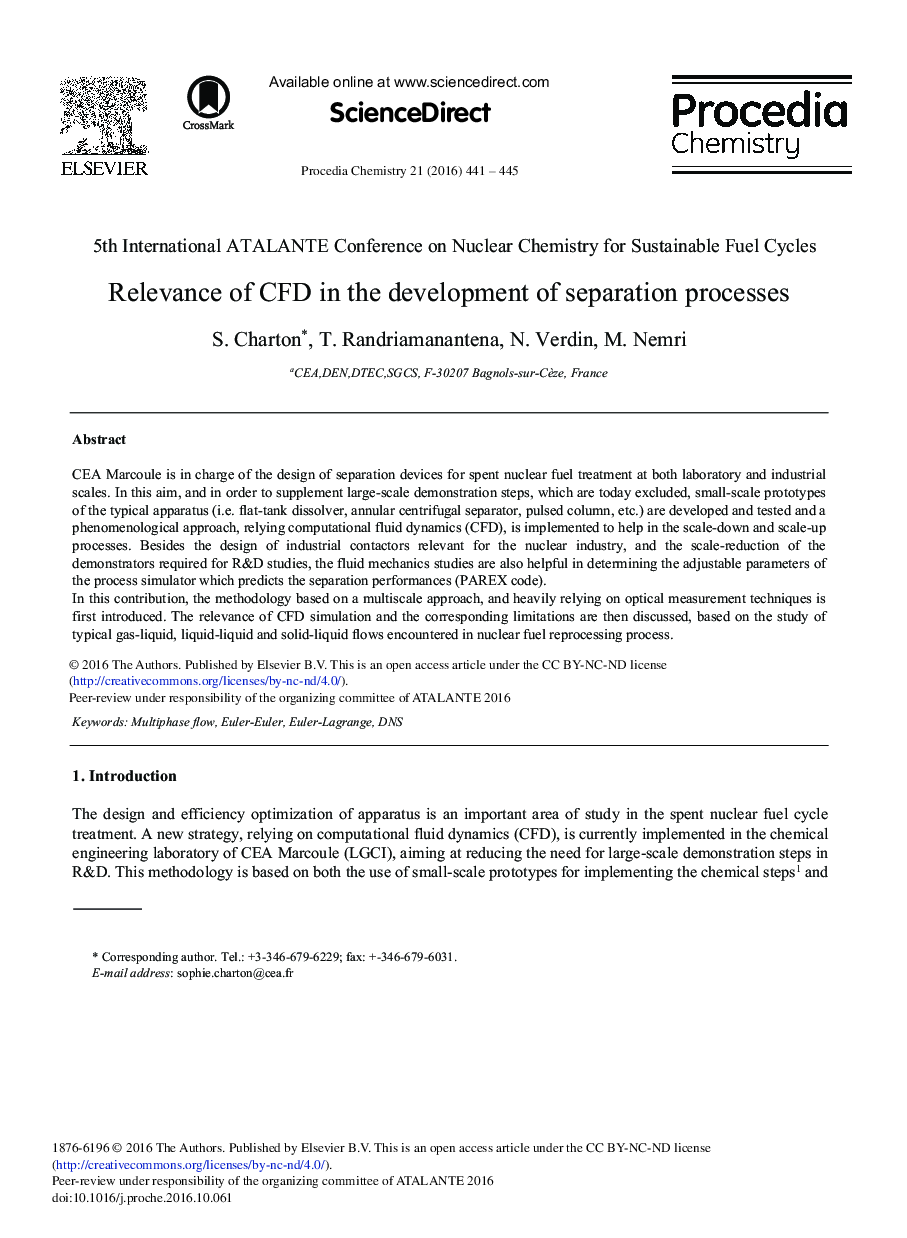| Article ID | Journal | Published Year | Pages | File Type |
|---|---|---|---|---|
| 4910962 | Procedia Chemistry | 2016 | 5 Pages |
CEA Marcoule is in charge of the design of separation devices for spent nuclear fuel treatment at both laboratory and industrial scales. In this aim, and in order to supplement large-scale demonstration steps, which are today excluded, small-scale prototypes of the typical apparatus (i.e. flat-tank dissolver, annular centrifugal separator, pulsed column, etc.) are developed and tested and a phenomenological approach, relying computational fluid dynamics (CFD), is implemented to help in the scale-down and scale-up processes. Besides the design of industrial contactors relevant for the nuclear industry, and the scale-reduction of the demonstrators required for R&D studies, the fluid mechanics studies are also helpful in determining the adjustable parameters of the process simulator which predicts the separation performances (PAREX code).In this contribution, the methodology based on a multiscale approach, and heavily relying on optical measurement techniques is first introduced. The relevance of CFD simulation and the corresponding limitations are then discussed, based on the study of typical gas-liquid, liquid-liquid and solid-liquid flows encountered in nuclear fuel reprocessing process.
